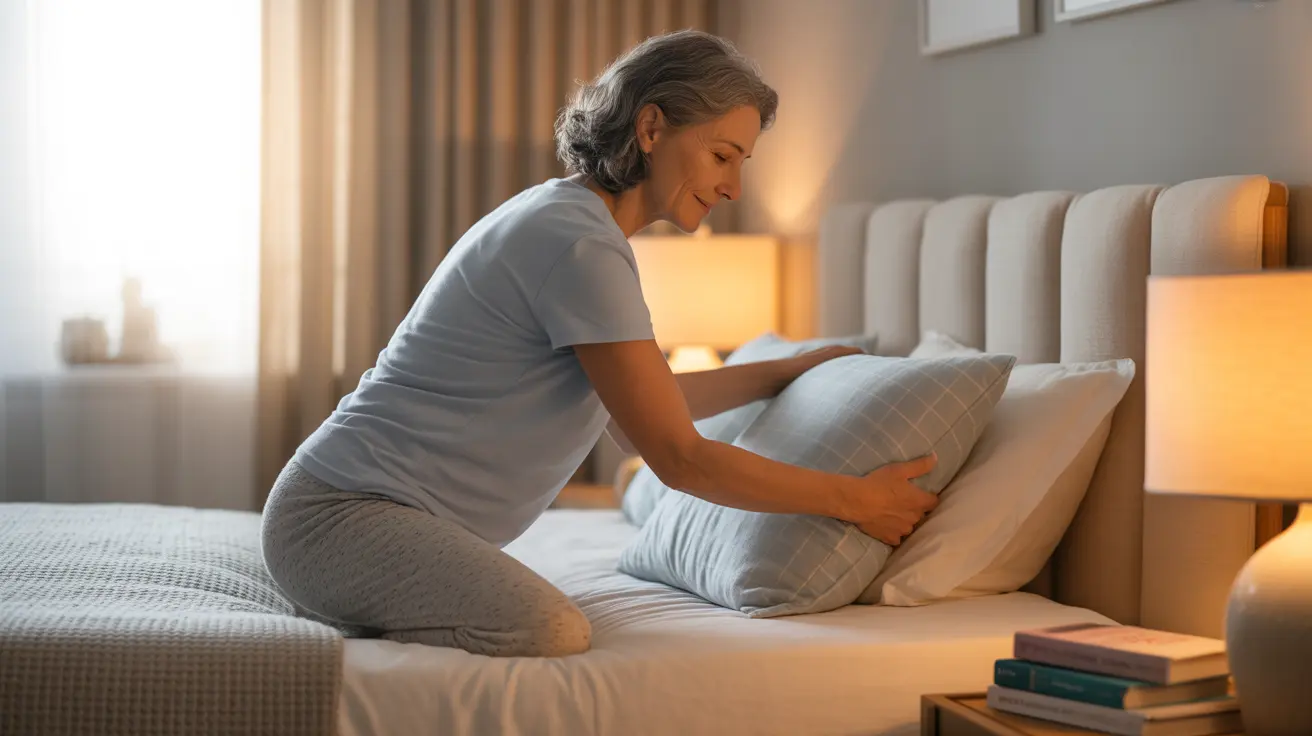If you've ever experienced joint pain that seems to worsen as the sun sets, you're not alone. Nighttime joint pain can significantly impact sleep quality and overall well-being, affecting millions of people worldwide. Understanding why joints hurt more at night and learning effective management strategies can help you reclaim restful sleep and improve your quality of life.
This comprehensive guide explores the causes of nighttime joint pain, practical solutions for relief, and when to seek professional medical attention. We'll examine evidence-based approaches to help you manage this challenging condition effectively.
Why Joint Pain Often Worsens at Night
Several factors contribute to increased joint pain during nighttime hours. The body's natural circadian rhythm affects inflammation levels, with inflammatory markers typically peaking during the night. Additionally, being still for extended periods can lead to joint stiffness and increased discomfort.
Common factors that intensify nighttime joint pain include:
- Decreased production of natural anti-inflammatory hormones during night hours
- Reduced movement and circulation while sleeping
- Changes in body temperature affecting joint fluid viscosity
- Daily stress and activity accumulation
- Heightened pain perception due to fewer distractions
Effective Management Strategies for Nighttime Joint Pain
Bedtime Routine Modifications
Establishing a proper bedtime routine can significantly impact joint comfort during sleep:
- Gentle stretching exercises 30 minutes before bed
- Warm shower or bath to promote muscle relaxation
- Light massage around affected joints
- Application of topical pain relievers
- Proper hydration throughout the day
Optimal Sleep Environment
Creating the right sleeping environment is crucial for managing joint pain:
- Maintain a consistent room temperature between 65-68°F (18-20°C)
- Use a supportive mattress that properly aligns your spine
- Invest in pillows that provide adequate joint support
- Consider using a heated blanket during colder months
- Ensure the room is dark and quiet
Best Sleeping Positions for Joint Pain Relief
The way you position yourself during sleep can significantly impact joint comfort:
For Hip and Knee Pain
- Place a pillow between your knees when sleeping on your side
- Use a small rolled towel under your lower back when lying on your back
- Avoid sleeping on your stomach, which can strain joints
For Shoulder and Neck Pain
- Choose a pillow that keeps your neck aligned with your spine
- Consider using a body pillow for additional support
- Avoid sleeping on the affected shoulder
When to Seek Medical Attention
While some joint pain at night is common, certain symptoms warrant professional medical evaluation:
- Severe pain that consistently disrupts sleep
- Joint swelling, redness, or warmth
- Pain accompanied by fever or unexplained weight loss
- Progressive worsening of symptoms despite home remedies
- Morning stiffness lasting more than an hour
Frequently Asked Questions
What causes joint pain to get worse specifically at night?
Joint pain often worsens at night due to the body's natural inflammatory response peaking during nighttime hours, reduced movement, and changes in hormone levels. The lack of daytime distractions can also make pain more noticeable.
How can I reduce or manage joint pain that wakes me up during sleep?
Implement a combination of strategies including gentle stretching before bed, maintaining proper sleep posture, using supportive pillows, and creating an optimal sleep environment. Consider using heat therapy or doctor-approved pain relievers when necessary.
Which sleeping positions and bedding choices help prevent nighttime joint pain?
Use a supportive mattress and pillows that maintain proper spine alignment. Sleep on your side with a pillow between your knees for hip pain, or on your back with proper neck support for upper body discomfort. Avoid positions that put pressure on painful joints.
When should I see a doctor about persistent joint pain at night?
Consult a healthcare provider if you experience severe pain that regularly disrupts sleep, joint swelling or redness, pain accompanied by fever, or symptoms that worsen despite home treatment measures.
Can arthritis or other chronic conditions cause joint pain mainly at night?
Yes, conditions like rheumatoid arthritis, osteoarthritis, and fibromyalgia often cause increased pain at night due to inflammatory processes and the body's natural circadian rhythm affecting pain perception and inflammation levels.




